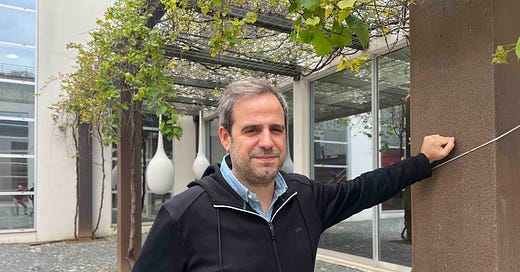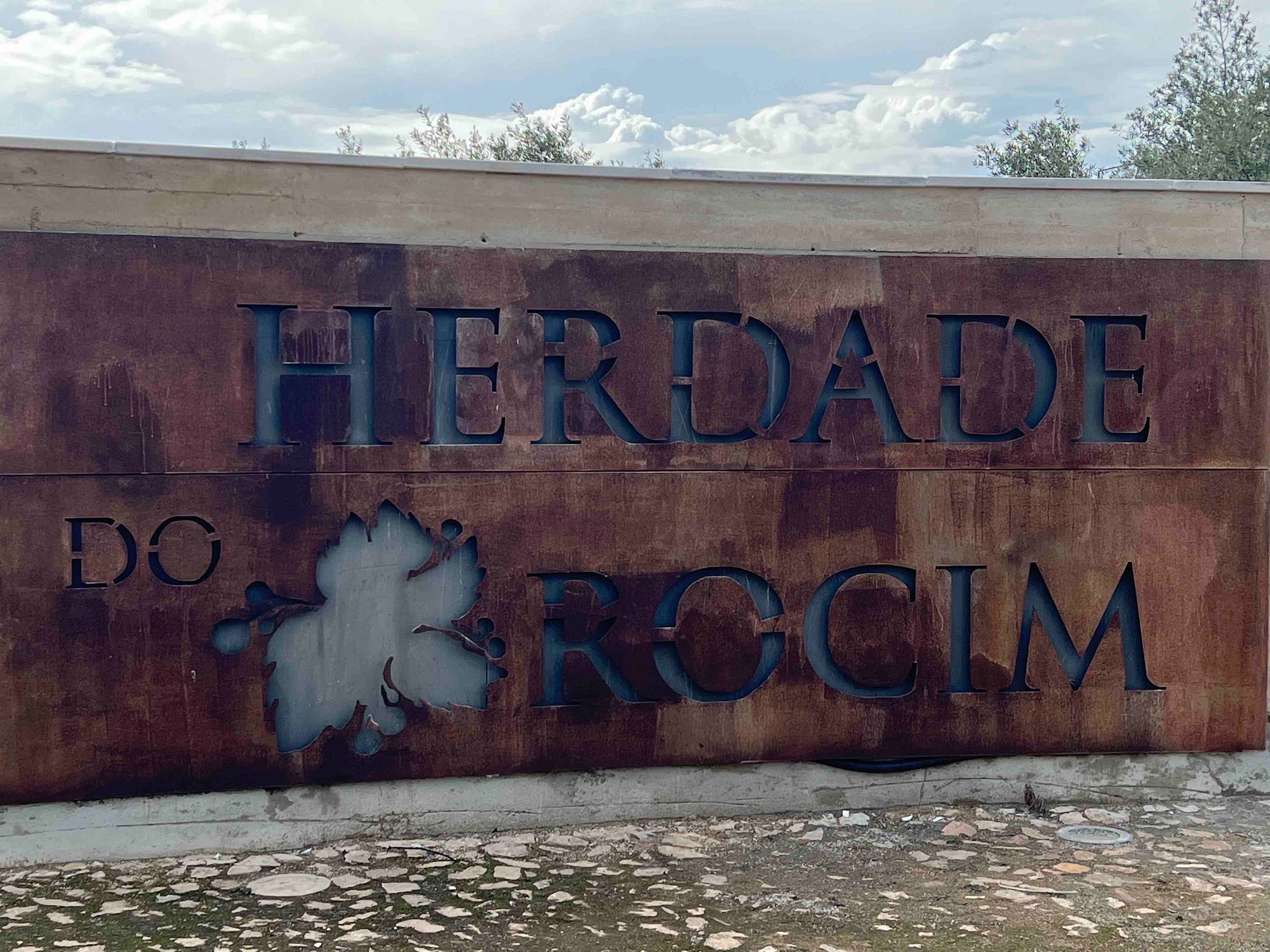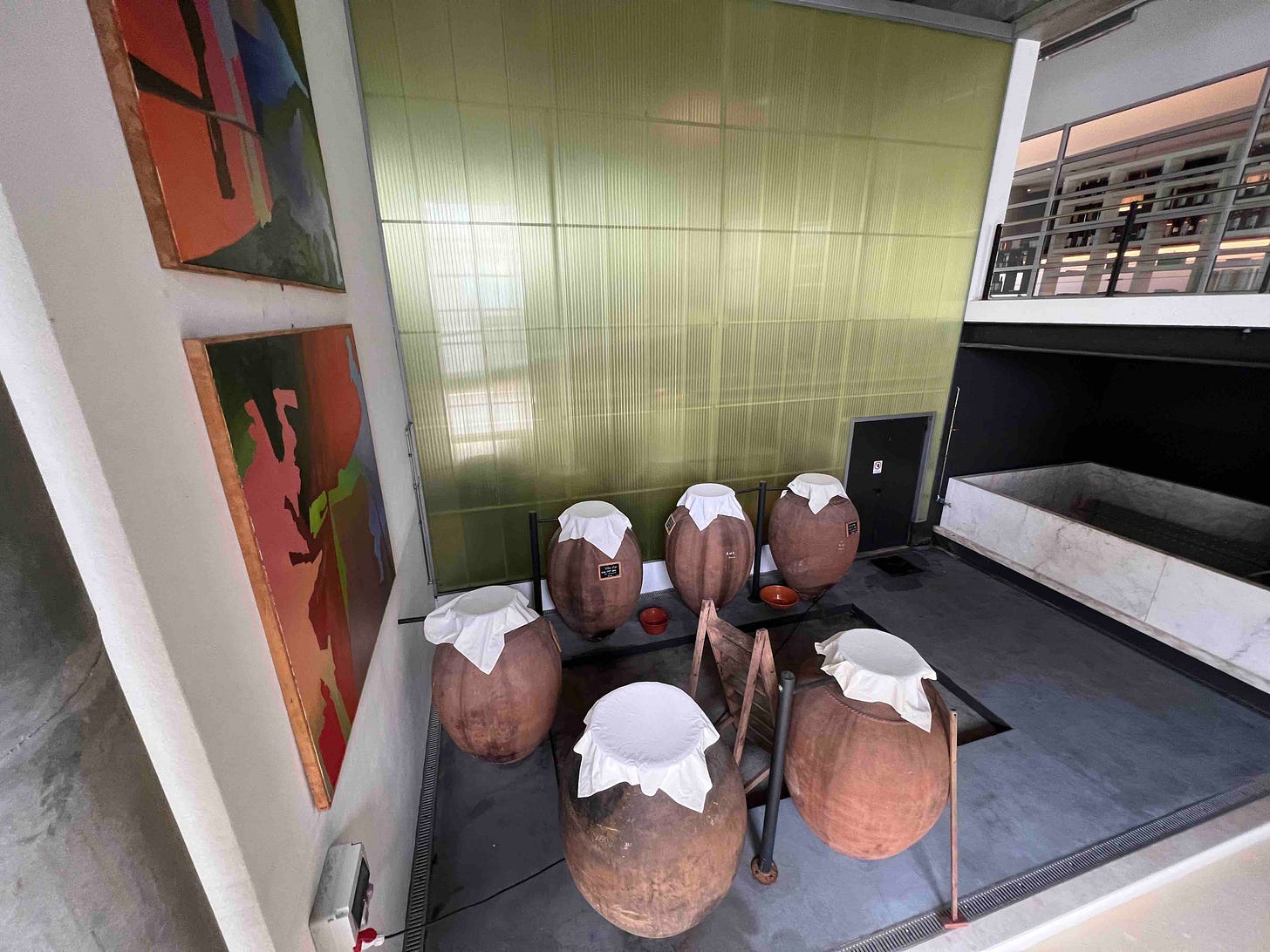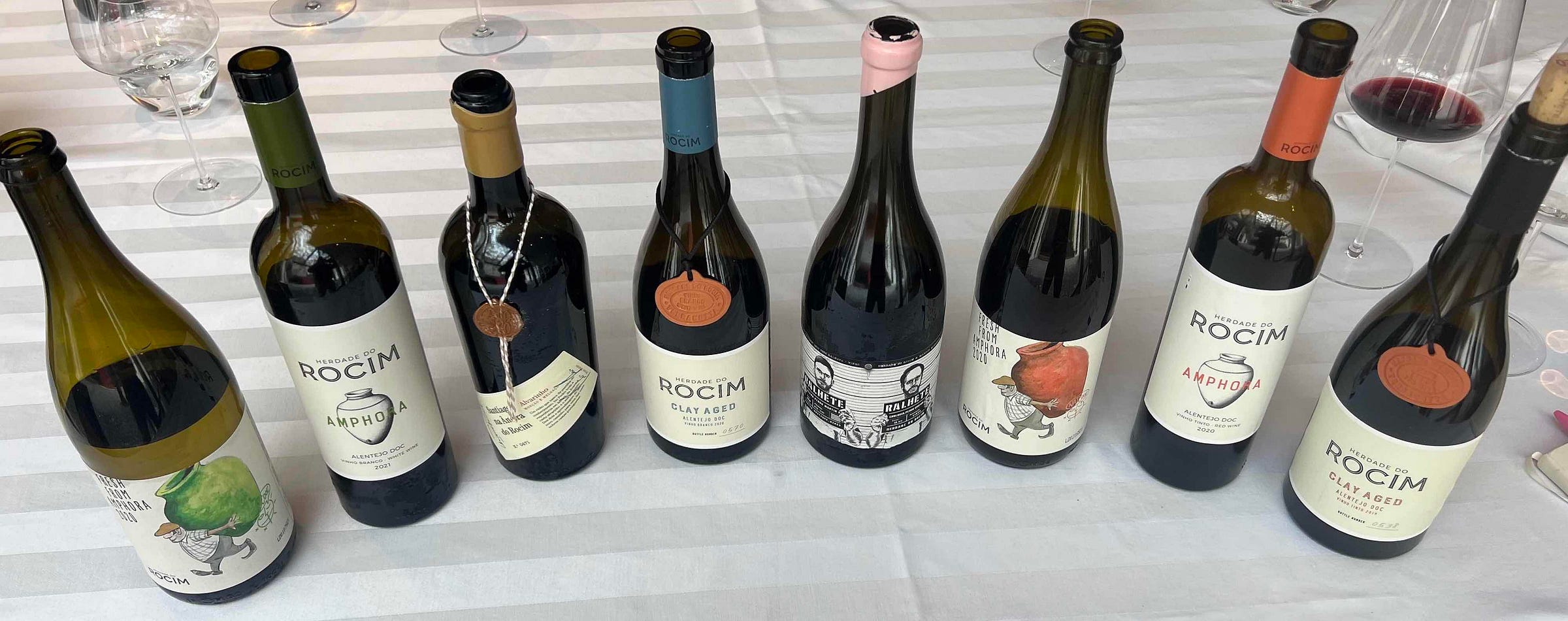Criss-crossing the Alentejo with a thirst for wine knowledge we often find ourselves driving through the small, picture-perfect Portuguese town of Cuba.
I always presumed it was named after the Caribbean island, but the townsfolk claim it was the other way around...and then they explain why.
While most of the world believes Christopher Columbus was born in Italy, Alentejano Cubans say he was born in Portugal and named the island after his home town.
This explains the large bronze statue standing on a globe and staring into the distance which adorns the town’s main street...but doesn’t consider any evidence to the contrary, even if questions remain.
Cuba is part of Vidigueira – one of Alentejo’s eight wine “DOC” sub-regions (Denominação de Origem Controlada) famous for its white wines.
It’s a municipality and a town with a more widely accepted claim to fame: as the home of Vasco de Gama, another of the explorers circumnavigating the globe at the turn of the 15th century, who most definitely was the 1st Count of Vidigueira in 1519.
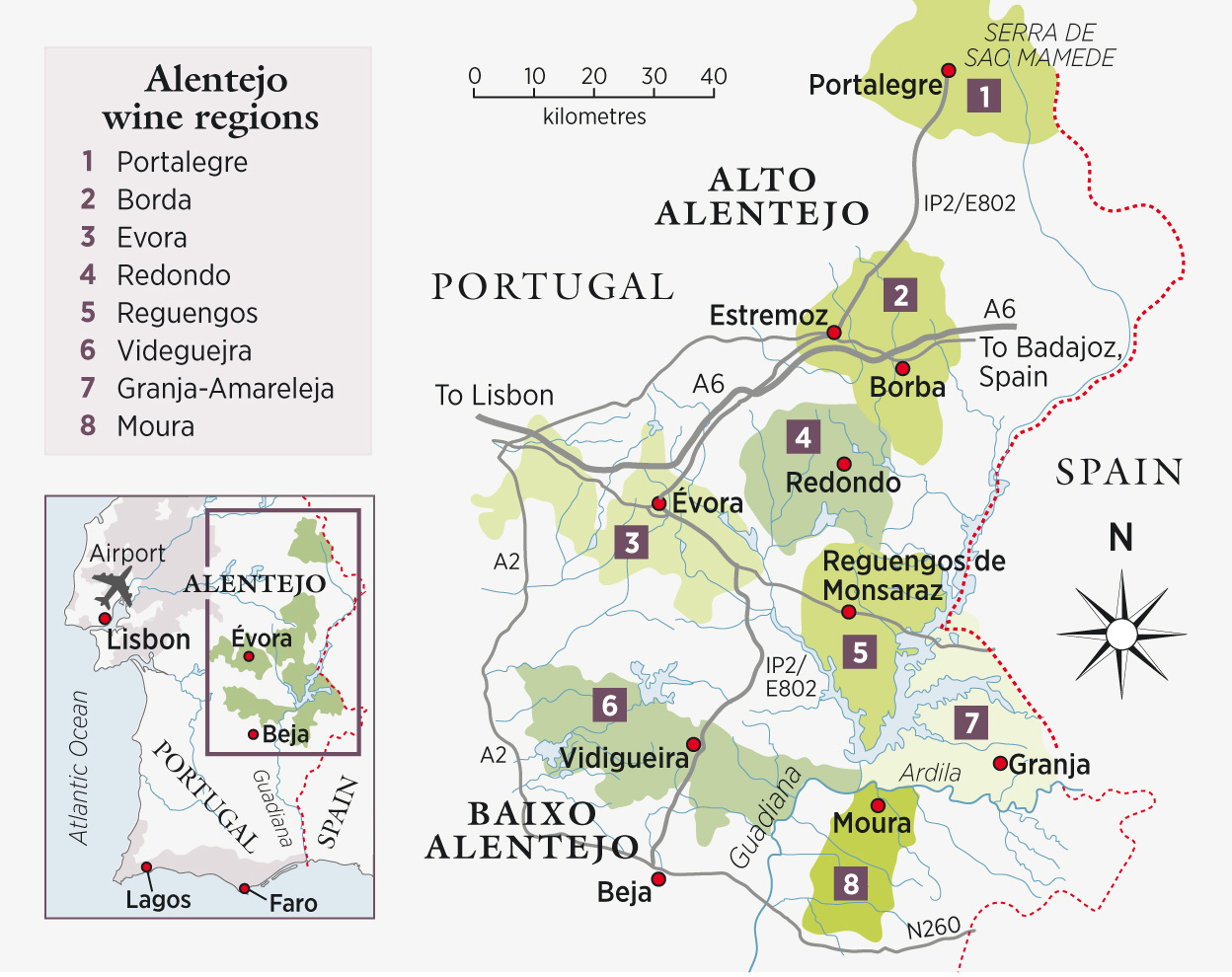
One of the most well-known estates in the region is Herdade do Rocim and the past – both ancient and prehistoric – plays a large part in the craft of its winemaker Pedro Ribeiro.
Rocim’s winery is an architectural gem between the towns of Vidigueira and Cuba in the shadow of the Serra do Mendro hills – a geological fault which cuts the region in half and divides the upper Alto Alentejo from the lower Baixo Alentejo.
“We can make fresh, mineral, elegant whites and reds in this region for two reasons,” says Pedro Ribeiro, highlighting unusual granite soils and the Atlantic winds that blow across the Alentejo plains to these hills.
“It's not about the grapes here, Portugal is known for blends in both white and red. It's about the region and the terroir of that region, and that's in our DNA: blends and terroir.
“The way we make wine we don't focus on fruits, we focus on terroir. It’s like you can almost lick the soil, the rocks of our estate.”
That’s the geology, and Roman history provides the talha, or amphora-style of winemaking, which is such an important part of Rocim’s large wine portfolio.
Winemakers have many different traits, but risk-taking comes with the territory when variables like weather remove so much control from the artist and the scientist.
The very best are supremely confident in their decision making, and Pedro Ribeiro is not someone beholden to the opinions of others.
His “epiphany” about talha wines, as he puts it, happened about a decade ago somewhere over the Atlantic Ocean on the way back to Portugal from New York.
“Up until then nobody was bottling amphora wines – it was made for local consumption and people would fill up a jug – it was a local people's wine.
“I was in New York in the best restaurants with the top sommeliers and suddenly I realised they weren’t so happy or enthusiastic about selling the, you know, Château Mouton Rothschild, or blah, blah, blah.
“They were much more enthusiastic about selling the crazy white wine from Slovakia or orange wine from northern Italy. So, I thought, we have all this at our place.
And so the winemaker from Porto who started in the fortified wine industry before spending time in Australia and then moving to the Alentejo, went against the grain and started making and bottling the vinho de talhaignored by most mainstream winemakers.
“They used to say ‘it's nuts, he only thinks about amphora wines,’ but nowadays, even the big wineries have amphora.
“The millennials don't have the money for Château Margaux and are happy to pay ten times less, be more cool and drink wine from Slovakia, Romania or Portugal.”
Every year Rocim hosts an Amphora Day for hundreds of visitors and dozens of producers from all over the world – it’s a celebration of an old style of winemaking that is fast gaining popularity.
Claiming he never liked oak barrels, Pedro Ribeiro is a clay enthusiast, but not dogmatic about the way these wines are produced.
“If you are just starting to drink wines, for many people this is not the easiest way to start. Usually is more a wine for connoisseurs, but also this is changing a lot. You know, the new wine drinkers are not the same as a few years ago.
“If you go for a classic talha wine it’s nothing like the modern style you taste in a Pinot Grigio or a Sauvignon Blanc. It's more on the mineral side.
“We have traditional amphora wines that we call Vinho do Talha made in those big clay pots, we have a modern approach we call clay aged wines, made in some clay pots developed by us and Monpellier University. We try to develop the 2,000 year old tradition.”
Cuba and nearby Vila de Frades – which also fell under the domain of 1st Count Vasco da Gama – are at the heart of Portugal’s traditional talha production.
Cooperativos or co-operatives have always played a valuable role in Portugal’s winemaking, and the Vidigueira co-operative is a huge producer of some great affordable, staple wines – including a talha offering.
Their Antão Vaz is one of our favourite day to day drinks – light, fresh and in our local supermarket – a grape that rarely disappoints and which some describe as Portugal’s equivalent to Chardonnay.
The world of Portugal’s indigenous grapes is a confusing one for non- Portuguese speakers, but if you like Chardonnay, anything with Antão Vaz or Encruzado is a good bet both in Alentejo or elsewhere in the country.
“We consider ourselves not only Alentejo wines, we consider ourselves as a multi-region project,” said Pedro Ribeiro, but Alentejo is at Rocim’s heart.
“We suffer a little bit from our success in Alentejo – suddenly, in the last 20 years, our industry is the best-selling region in Portugal, and part of that success was a new world appeal in wines: very easy, very fruity whites and very full bodied reds.
“That feeling of Wild West, that feeling of freedom, and that feeling of no rules, you can feel here in the same way as in Australia, or in South Africa, but at the same time, there's also a big wine culture and history here, like the amphoras, so it's a mix between both things.
“And that's why I focus on amphora wines – I think this is so important for the Alentejo, although it's a niche wine, it puts the focus again in our region.
“Suddenly all the journalists when they come to Alentejo, all the wine connoisseurs, want to taste amphora wines.”
But it is an acquired taste – the Robert Parker wine critic representative for Portugal marks talha extremely low.
“He said ‘Pedro I'm very angry with you because you have some amphora wines, I'm always wondering about your amphora wines, you never gave these to me for tasting.’ I said ‘You know why? Because you don't like it and you don't understand it.’”
Rocim received a disastrous 74 points out of a hundred and now Pedro has banned the wine critic from tasting his talha wines again.
But Herdade do Rocim has a huge variety of different wines – many that score extremely well.
Pedro Ribeiro recently created a high end wine called Jupiter that sold out in three months to an investment fund at €1,000 a bottle. Not everyone judges amphora-influenced wines the same way.
And Rocim is also one of just nine wineries which has so far been certified by the Wines of Alentejo Sustainability Programme.
It’s an impressive programme with tough requirements and has been established to protect the region as climate change starts to have more impact on vineyards, and there’ll be more of that in articles to come.
And more on the quirks of Alentejo and its fascinating history.
With huge thanks to Pedro Ribeiro for a fabulous wine tasting lunch at Rocim and to Bruno Gomes for making it happen.

